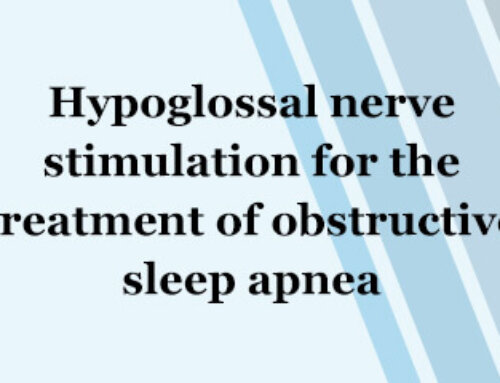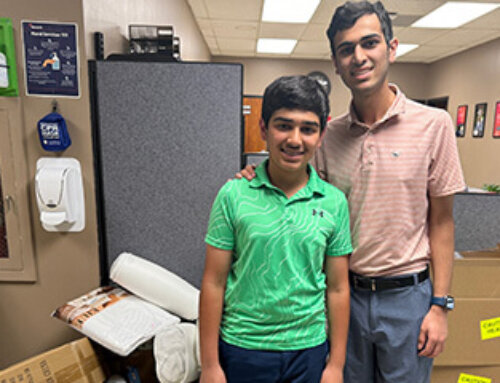In a year when health care providers are under an enormous amount of stress, and uncertainty is the norm, it’s reassuring to know that the field of sleep medicine has a bright future. New fellows are preparing to enter the subspeciality in record numbers while educators are successfully adapting their training to distance and in-person learning.
Making a Match
A record-setting 165 physicians were matched with a sleep medicine fellowship training program during “Match Day” on Oct. 28, 2020. These new fellows, and the sleep programs they’re entering, had to adapt to a selection process unlike anything they had ever experienced.
Doctors want to see where they are training, and that space has added importance in sleep medicine, because prospective fellows normally can explore the sleep lab and clinic. This year, however, everything moved online. Video tours of sleep centers, hospitals, and campuses helped potential fellows get acquainted with the facilities, while the all-important interviews were conducted virtually.
Of 86 sleep medicine programs, 74 filled their fellowship positions during the Fellowship Match coordinated by the National Resident Matching Program Specialties Matching Service. Those that didn’t fill their slots are able to connect with unmatched applicants, conduct interviews and offer a position to a new candidate. Glen Greenough, MD, associate professor of medicine, neurology and psychiatry and the sleep medicine program director at Dartmouth University, said he was in disbelief when one of his two fellowship slots wasn’t filled.
“COVID has transitioned us to a completely virtual environment,” said Dr. Greenough. “Candidates can interview at more programs with no added expense. The drawback to that can be committing to a place you haven’t really had a chance to experience, but a lot of people seemed to match close to home, which also might be because of everything happening this year.”
Anita Shelgikar, MD, MPHE, clinical associate professor of neurology and program director of the sleep medicine fellowship at the University of Michigan, filled six slots in the match and says there’s a lot to attract people to a career in sleep medicine.
“The interface of technology and patient care in the practice of sleep medicine is very exciting, and opportunities for sleep and circadian research are ever-growing and ever-changing,” she said. “In addition, so many people in our communities in general are reporting sleep disturbances and difficulty with sleep right now, making a sleep medicine career very timely.”
Moving the Match
Dr. Greenough chairs the AASM Sleep Medicine Fellowship Directors Council (SMFDC) Steering Committee, which aims to increase the number of individuals entering the field. The SMFDC oversees sleep medicine’s participation in the matching program and develops resources to support sleep training programs and incoming fellows. While pleased with current growth in the field, the council wants sleep to be in the forefront of residents considering additional training. One way to do this is to move the sleep fellowship match.
The SMFDC is evaluating the possibility of moving the Sleep Medicine Match into the Medical Specialties Match, which is held about five weeks later and includes the subspecialties of pulmonary disease and critical care medicine, two highly competitive fields with applicants who also may have an interest in sleep medicine. Because applicants can apply to multiple fellowships, this move would have the potential to increase the number of qualified candidates who match into a sleep medicine fellowship, decreasing the number of unfilled positions.
“There’s a lot of overlap in people interested in pulmonary and sleep, but the way it’s set up now forces you to pick one or the other,” said Dr. Greenough. “By moving the match, candidates would be able to identify pulmonary and sleep medicine for fellowships instead of being unable to match with sleep because the match already occurred.”
The SMFDC is surveying sleep medicine program directors about the change, which could occur as early as next year. The Medical Specialties Match is in December, which would give programs more time for interviewing and ranking.
Sleep medicine has more room for growth to meet patient demand, expand access to care, and address the millions of Americans with undiagnosed sleep disorders. Initiatives like the AASM’s Choose Sleep program encourage a career in sleep medicine and provide program directors with resources to help them reach medical students and residents.
“Workforce development is one of the AASM’s strategic goals,” explained Dr. Shelgikar, who also sits on the AASM board of directors. “We have committed a significant number of resources to establish multiple training pathways to grow the number of physicians pursuing sleep medicine training.”
Adapting to Distance Learning
For current sleep medicine fellows and their programs, 2020 has meant a new way of training. The pandemic has forced program directors to implement remote instruction and patient care. Fortunately, sleep medicine is well-positioned for the use of virtual platforms to deliver care and education, and fellowships have successfully incorporated telemedicine as part of their training.
In an article on distance learning during the pandemic published in the Journal of Clinical Sleep Medicine, Dr. Shelgikar writes, “For all the uncertainty the COVID-19 pandemic brings, it also offers training programs the chance to think creatively and innovate educational methodologies and delivery.”
Her article also offers recommendations and resources to help adapt education and training to the virtual environment.
“Online learning allows for more collaboration among programs, letting them attend each other’s lectures, share resources, have common speakers and grow the curriculum,” said Dr. Shelgikar.
While we anxiously await a return to normalcy, adjustments made in response to the pandemic are likely to change the future of sleep medicine training as programs use technologies in new ways, and patients become more comfortable with virtual care. Current and incoming fellows will have the advantage of training under the innovative methods that will become the norm.





